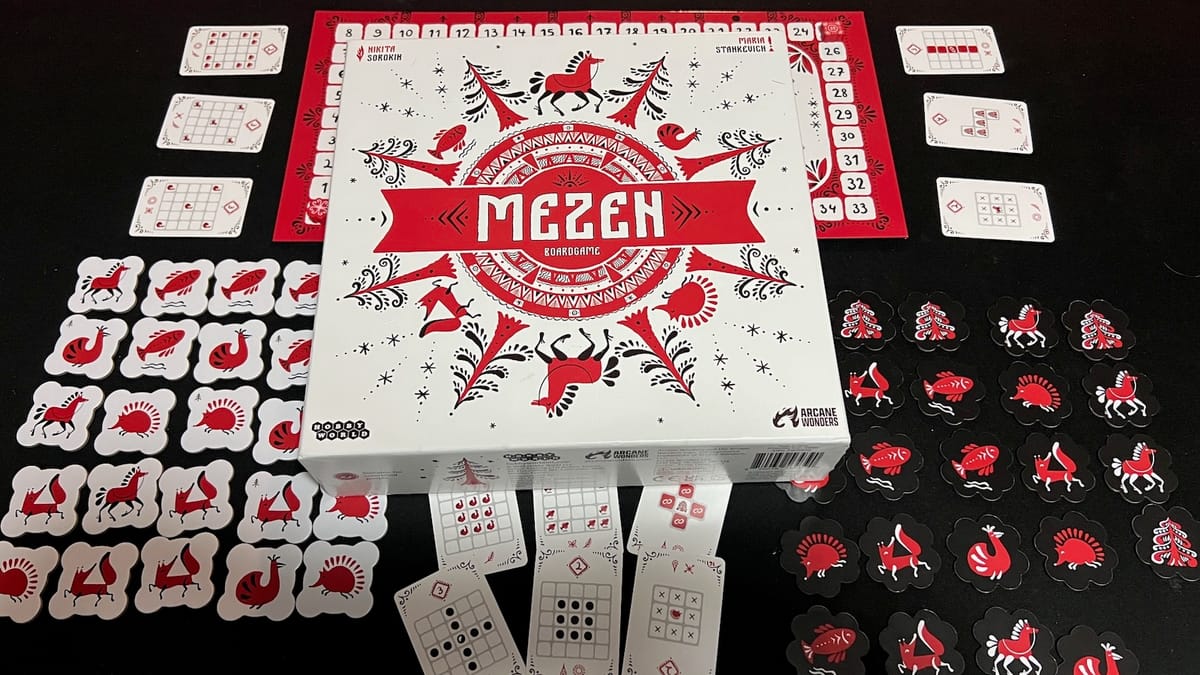
In the realm of cozy games, I’m always looking for something that feels great to play, looks great on the table, and strikes a chord with my family. With Mezen, all three boxes get checked.
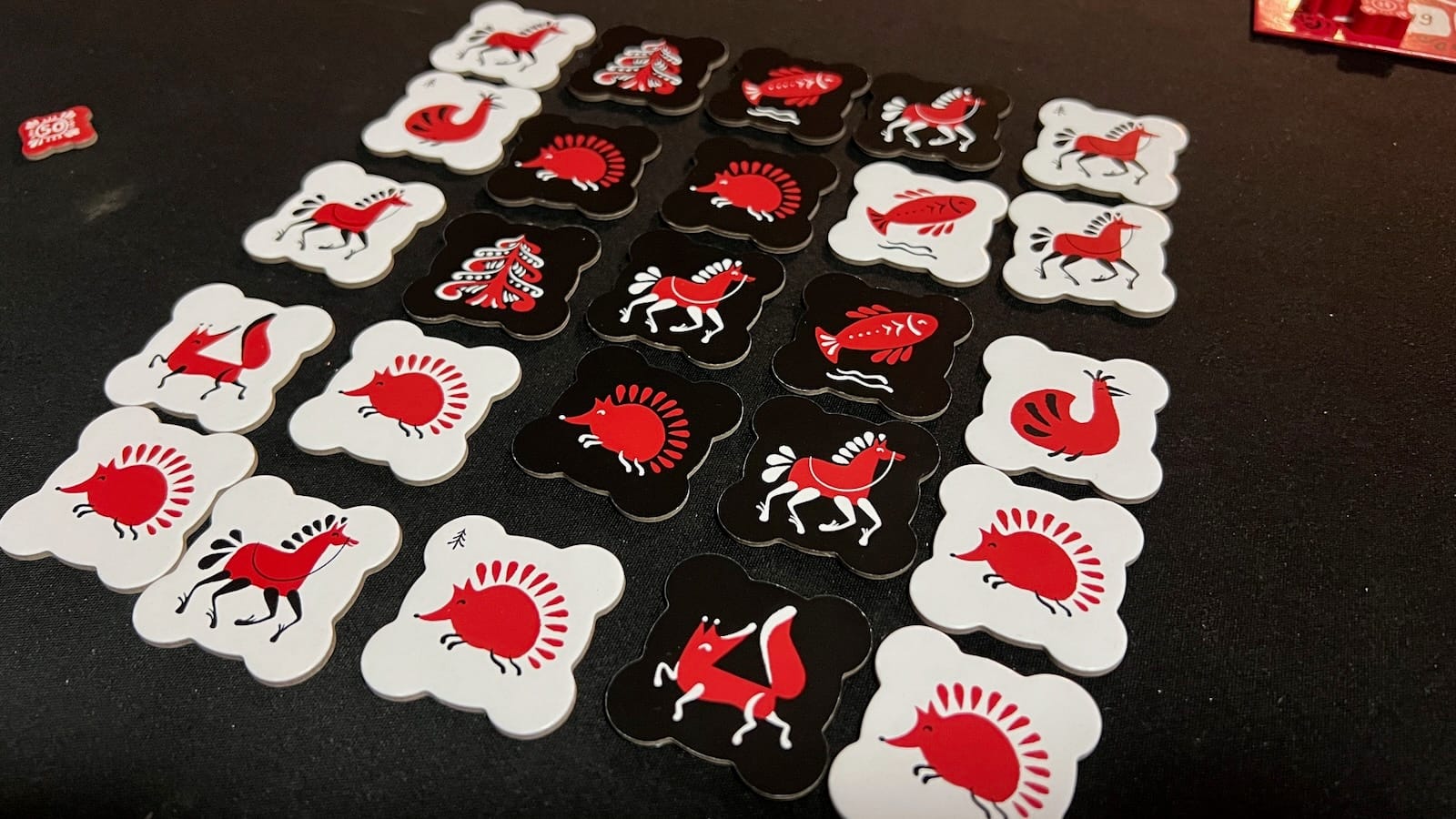
Mezen is a pattern-building game for 1-5 players from publisher Hobby World, US distributor Arcane Wonders, and designer Nikita Sorokin. The game is themed around an art style that grew out of the people living along the Mezen River in northwestern Russia. In Mezen, each player manipulates their painting, represented by a 5x5 grid of tiles, featuring various designs to score points from various scoring conditions across 10 rounds. The player with the most points at the end of the game wins!
Mezen features a central game board surrounded by 10 face-down scoring cards. The central board also houses the game’s scoring track, holds a supply of amulet tokens, and serves as the timer for the play session. At the beginning of the game, the first two scoring cards are flipped over, showing players the scoring conditions for the current round and the next round.

Each player is given a set of 25 tokens, each set with a unique geometric shape, that are randomly arranged into a 5x5 grid in front of them on their light colored side. This grid represents their overall painting. Players will also take five amulet tokens from the central pile that can be used to manipulate the painting in special ways throughout the game.
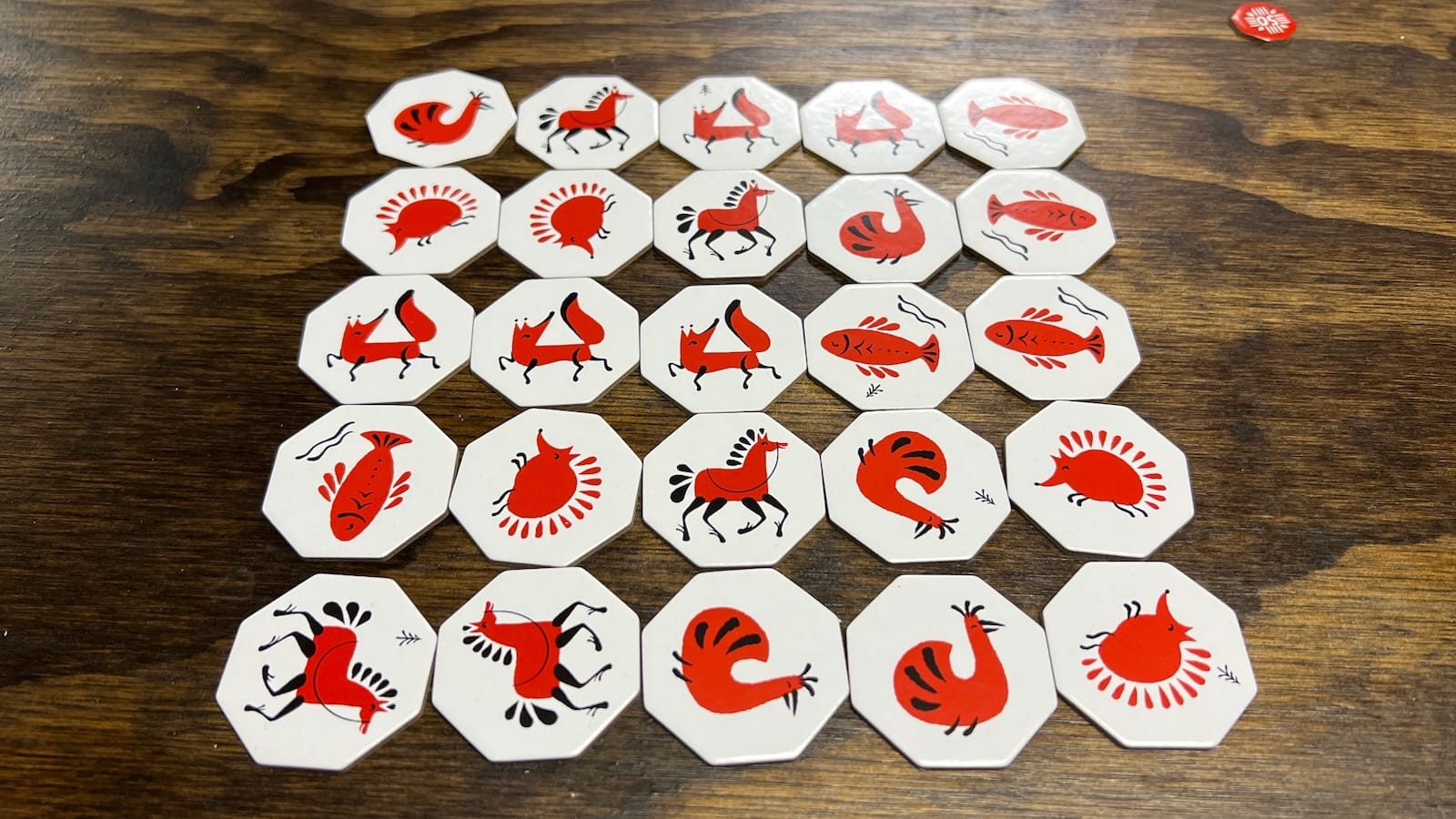
Each round, the active player will announce one of the five animals featured on the tiles as the active symbol. Players will remove a grouping of that animal, including any wild spruce trees, by removing all orthogonally touching tiles matching the animal. If a player doesn’t like the active animal, they can pay the active player an amulet to pick an animal of their choice. Players can also use their amulets to create a bridge between two matching groups of animals or exclude a tile to break a larger group into two smaller groups.
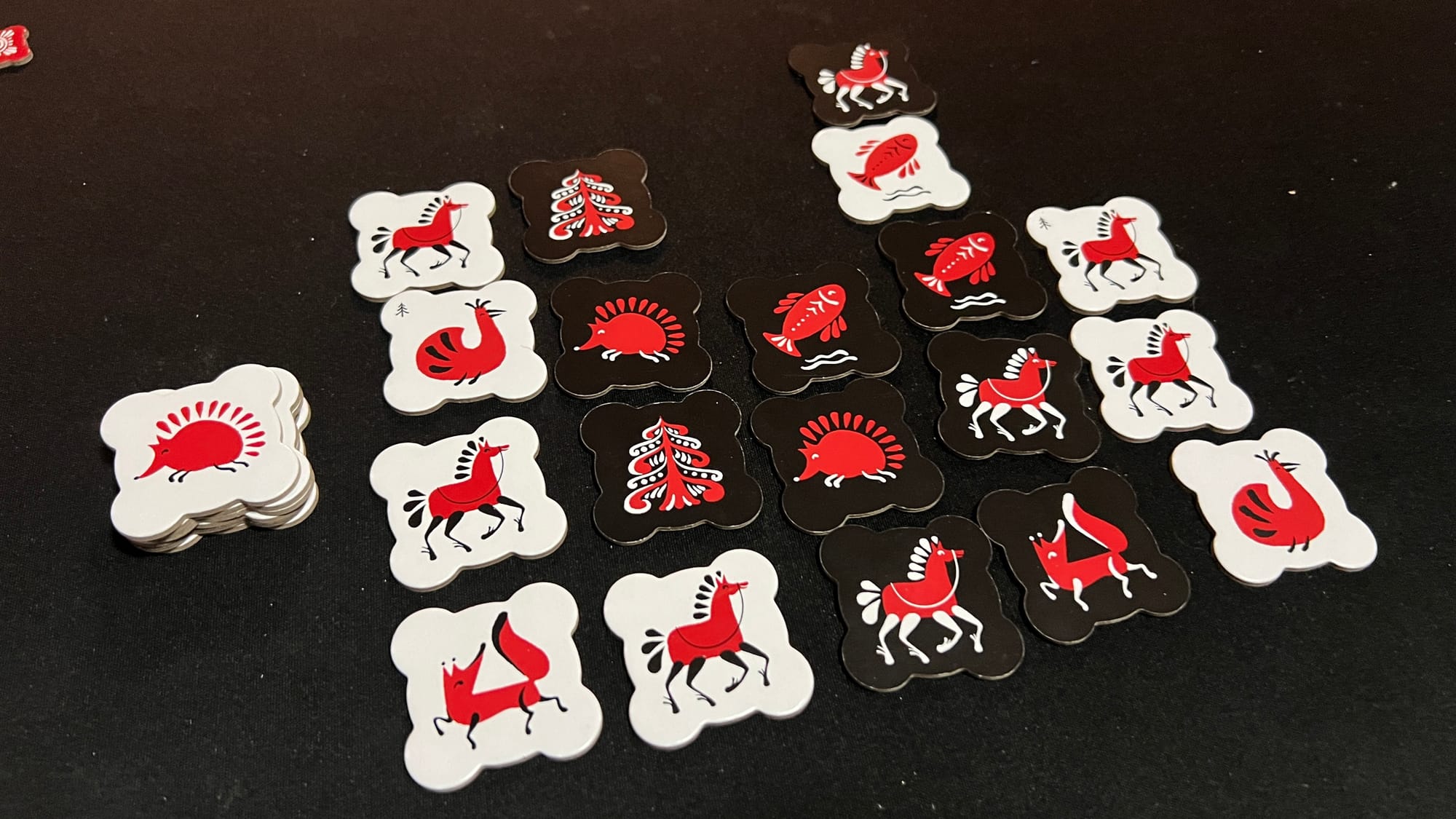
After tiles are removed, they are then flipped to their opposite side and set to the side. This may reveal the dark side of a tile or flip a tile back to its light side. In the grid, tiles will slide down to fill the gaps made in the painting from removing the tiles. Players can then take the tiles they set aside and fill in the empty spaces in the grid in any order and combination they would like, using their knowledge of the current and next round scoring conditions to strategize.
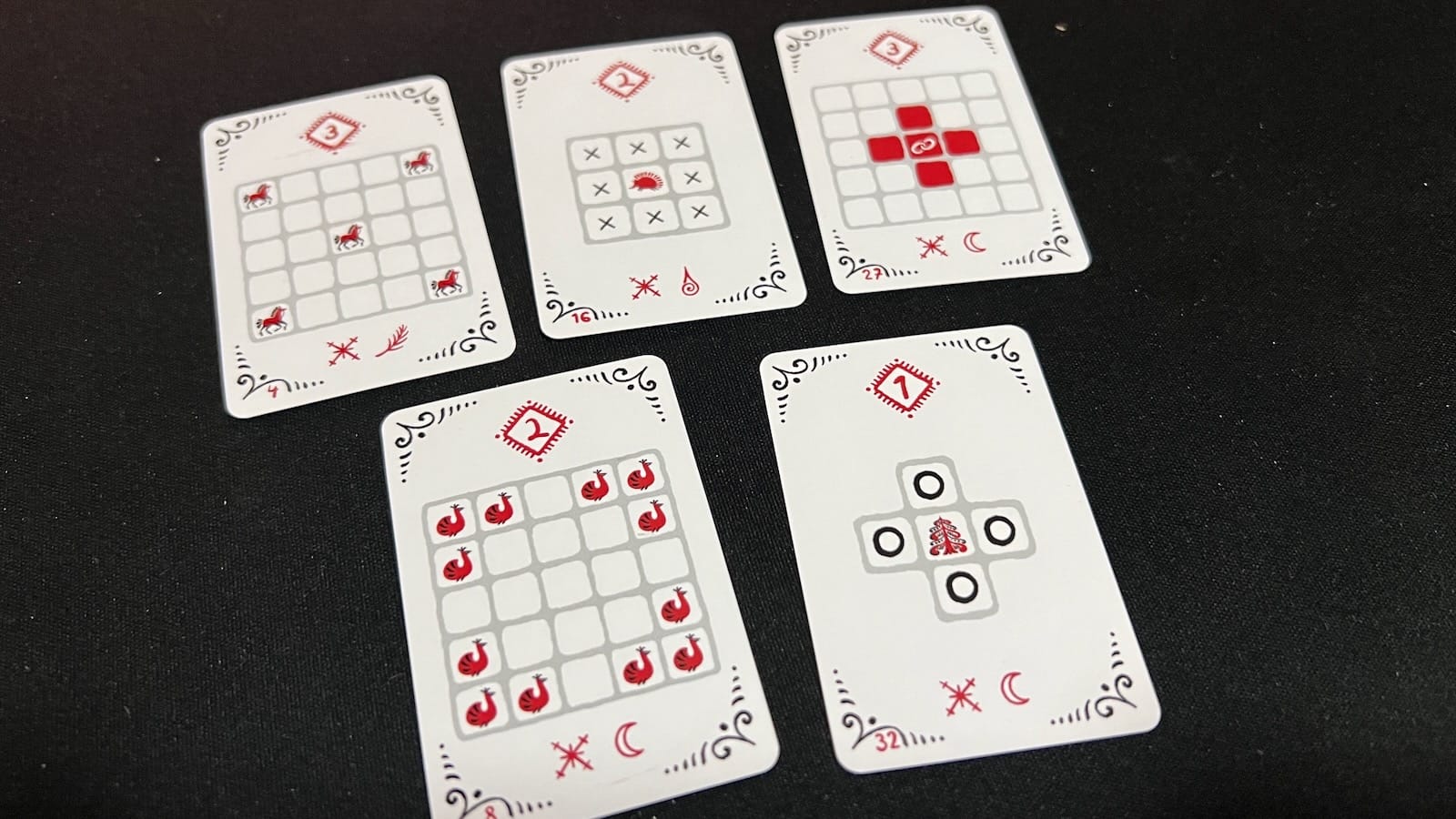
After this step, players will score the round. Scoring conditions are varied from game to game and include a wide variety of options. The most common scoring is having players have specific animals in specific spots in the grid, such as two points per bird in the central nine tiles or points per fish in the corner spaces. Points can also be given by pairing two animals side by side or even having isolated animals without any of their kin around them. Players can also forgo scoring a round to pick up two amulets to add to their supply. In round five, players will also get points based on the number of dark tiles that are face up, and will get points for light tiles faceup in round ten. Also in round 10, players will get points for their largest group of an animal of their choice and extra amulets to add to their total. At the end of each round, the active player's token will shift to the next player in clockwise order.
The game also includes a variant for single players. Players will start with only two amulets but will acquire new ones throughout the course of the rounds. Players will work through the game similarly to the multiplayer game and will compare their score to a chart denoting their level of craftsman.
Overall Thoughts
The production of Mezen is absolutely beautiful. The artwork by Maria Stenkovich is inspired by the Mezen style of painting that reached the peak of its popularity in the 19th century. The art would feature different geometric patterns and shapes while depicting the animals that were an important part of peasant life. The rule book includes two full pages outlining the history of the artform and its impact on the people of northern Russia. The art is all done in three colors, red, black, and white, and truly gives a wintery feel to the whole gameplay experience. The rest of the rulebook is also fairly straightforward to follow, despite some typos that I will write off as a translation issue. One of the hallmarks of this game is the accessibility of the design for those who are colorblind. Each player’s tiles have a unique shape, and the contrast between the dark and light colors makes it easy to distinguish which side you are on. A great design choice is featured on the scoring cards and comes in the setup of the game. Each scoring card features multiple tiny symbols that players will choose one of at the start of set-up. All the cards with that symbol will be separated from the deck and shuffled together. 10 cards will be chosen at random to use in the game, with the others being discarded. The randomness of what cards are placed where and what cards are used each game make each game unique.
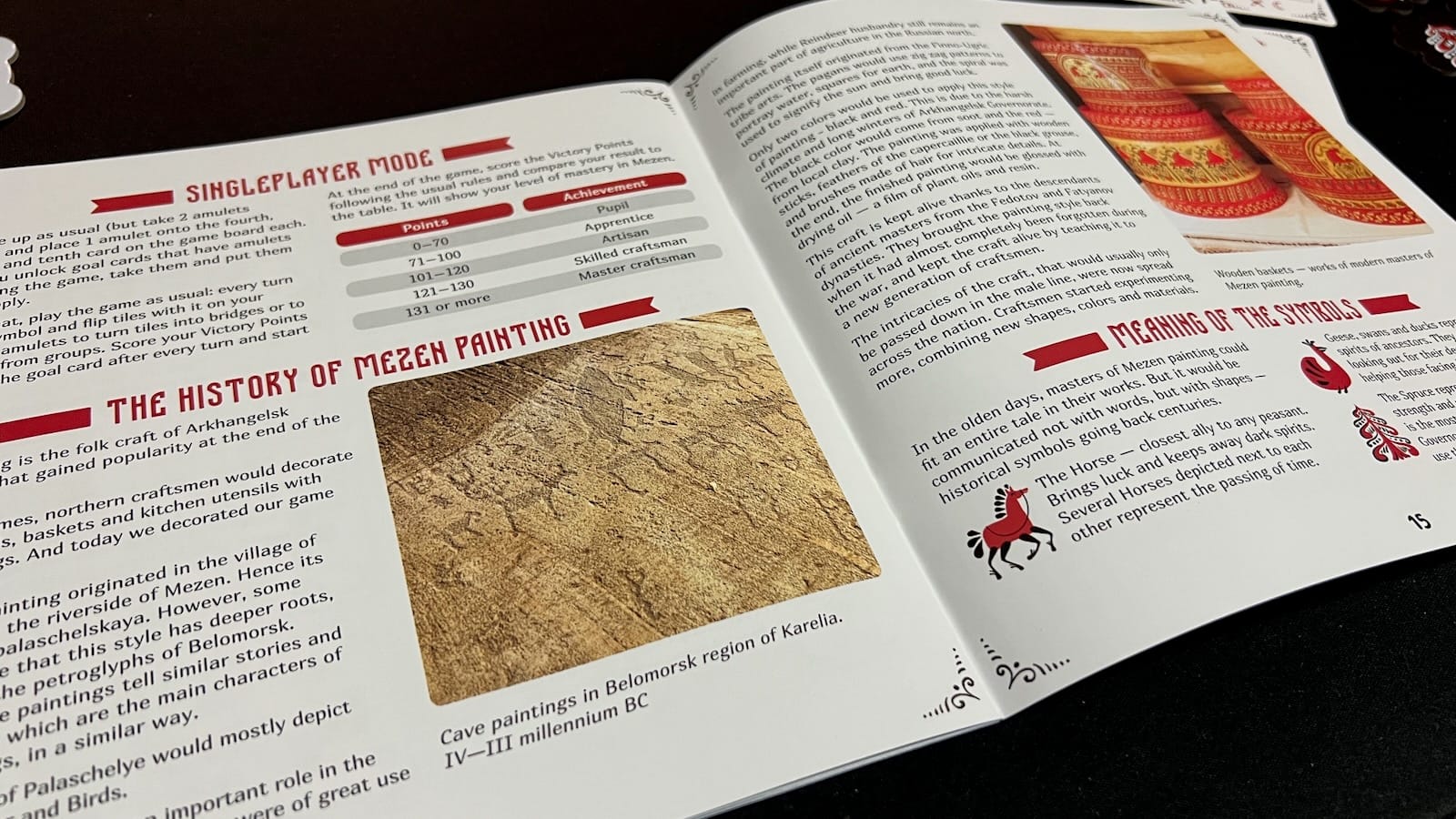
The gameplay is simple on the surface, but has a nuanced strategy woven throughout. Players are trying to maximize points each round, but also plan for the future at the same time. Throw in the randomness of what animal is on the other side of a tile and the choices of other players and you have a very strategic experience. The rules are easy to pick up and teach, but each game is going to involve adapting to the different variables. There is definitely some luck involved, but a good player adjusts.
This game is not going to be for everyone, and with the color scheme and ambiance the artwork creates, it almost feels like it should stay on the shelves until winter decides to show its face. Playing this game in the middle of summer almost seems out of place. I did enjoy my experience with Mezen, but I think the puzzling experience is going to cater towards those who favor the abstract game category versus a wider audience.
Mezen
Good
Mezen is a beautifully illustrated and fun puzzle game with some interesting mechanisms integrated. While easy to learn and teach, the strategy is deep, and there is a lot of replayability.
Pros
- Beautiful illustrations based on cultural artwork
- A fun grid puzzle system
- Scoring conditions will change every single game
Cons
- Maybe too small a niche for some
- Feels like a winter-only game
- Some translation issues in the rulebook
This review is based on a retail copy provided by the publisher.
